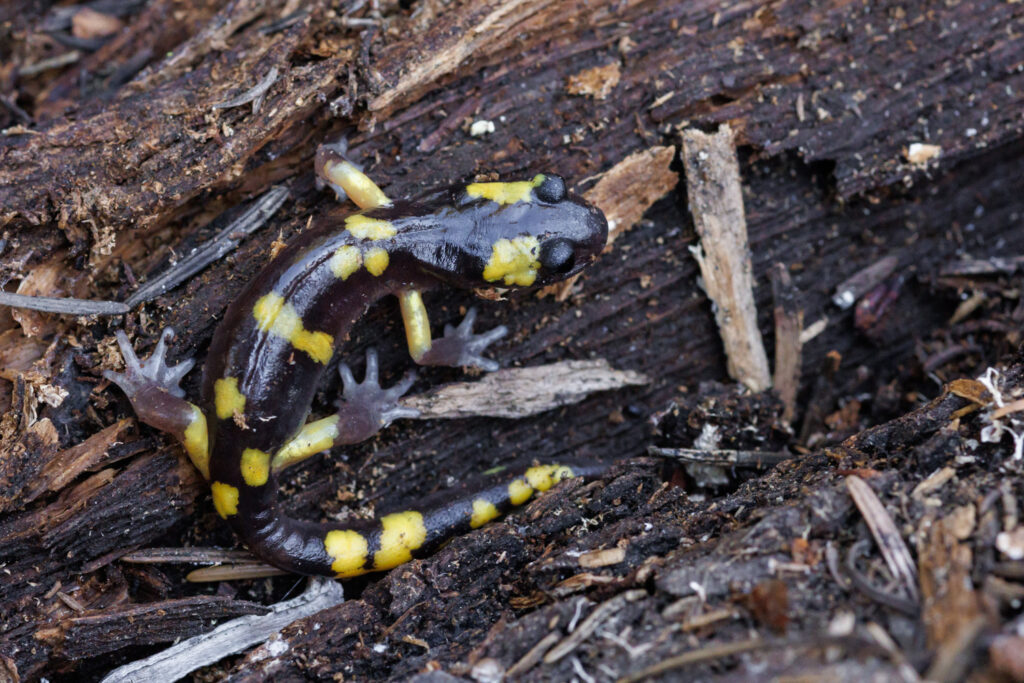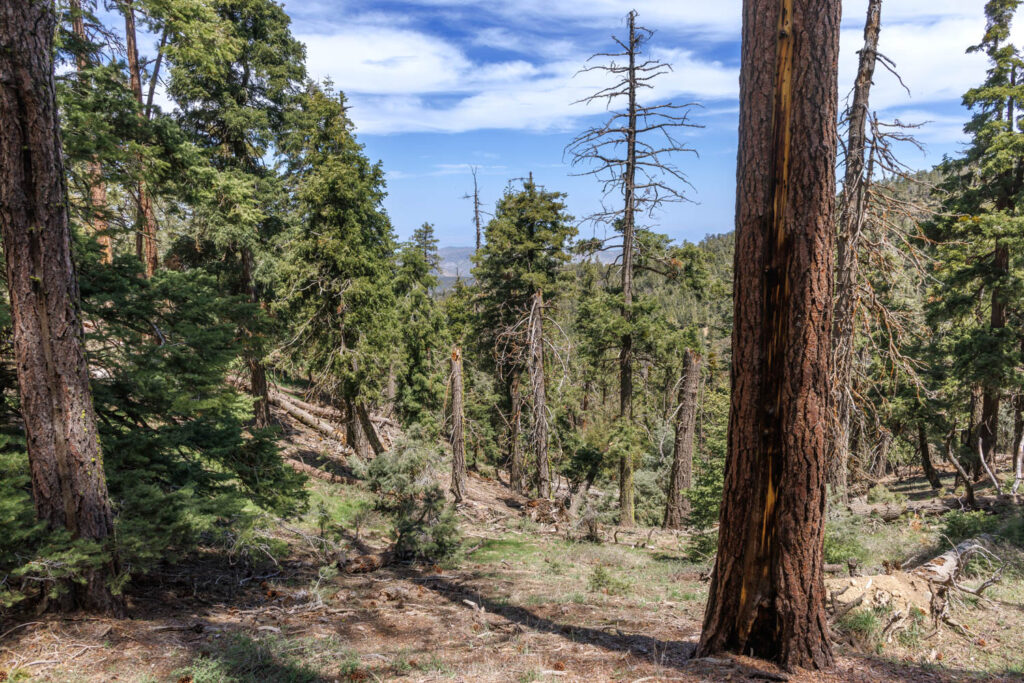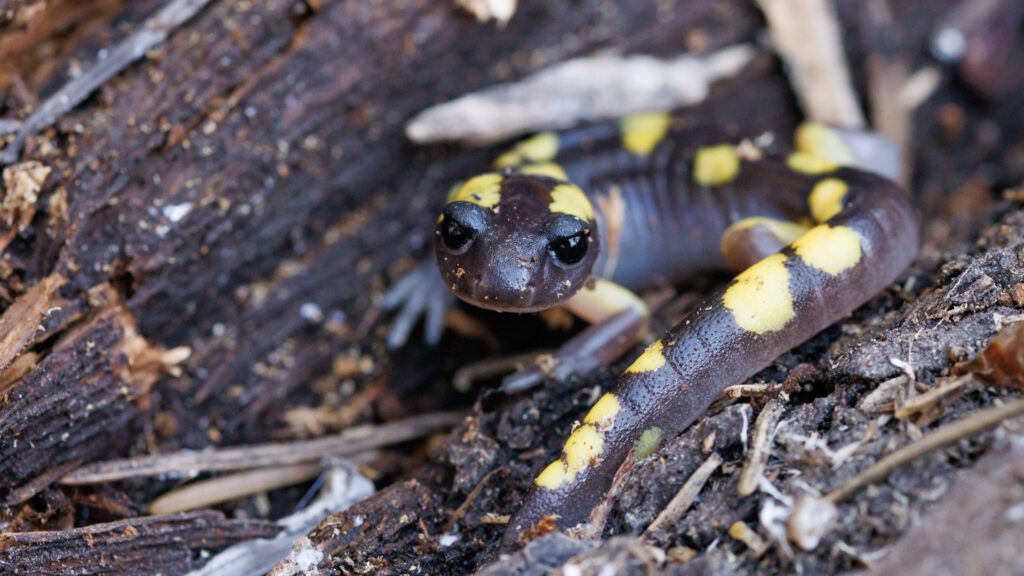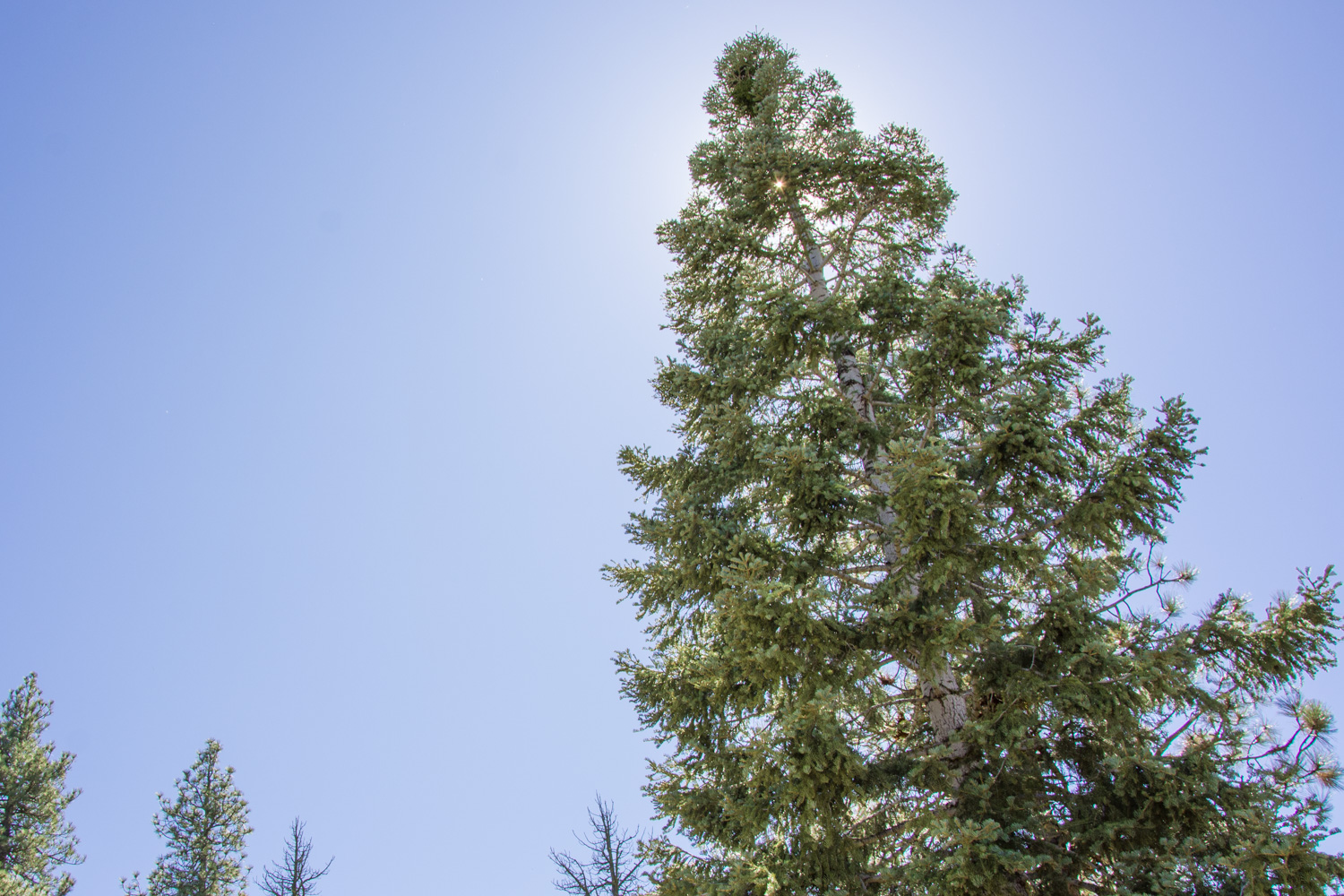Earlier this week, conservation groups asked the U.S. Forest Service to revisit its approval of a 1,600-acre logging and vegetation removal project near Mt. Pinos after the discovery of several rare salamanders in the project area. The project, which has not yet been implemented, was initially approved in 2019 by Los Padres National Forest officials who claimed the species is not known to occur in the area.

The yellow-blotched salamander or yellow-blotched Ensatina (Ensatina eschscholtzii croceater) was found within and adjacent to the Tecuya Ridge logging project area last spring, and the observations were vetted and confirmed in the California Natural Diversity Database earlier this year.
A trio of conservation organizations—Los Padres ForestWatch, the Center for Biological Diversity, and the John Muir Project of Earth Island of Institute—submitted a letter this week informing Los Padres National Forest officials about the presence of yellow-blotched salamanders in the project area, requesting that the agency prepare an environmental assessment or environmental impact statement before beginning any logging.
The Tecuya Ridge project allows cutting of live and dead trees of any size or age across much of the project area, and it represents the first time in decades the Forest Service approved a project allowing the removal of commercial-sized timber in Los Padres National Forest. It was originally approved using a loophole that enabled the Forest Service to avoid preparing more robust environmental analyses typical of these types of projects. However, the loophole can only be invoked for projects that will have no significant impacts to plants and animals deemed “sensitive” by Forest Service biologists.

The yellow-blotched salamander is one of 21 sensitive species in Los Padres National Forest that are supposed to receive special protections due to their vulnerability. These rare salamanders are found only along a narrow strip of mountains between the southern Sierra Nevada and the Mt. Pinos area, where they reside in leaf litter, downed woody debris, decaying logs, and the soil of conifer forests and oak woodlands in their range.
“These rare salamanders often live in logs and other dead wood—the very habitat components that will be removed, destroyed, or significantly disturbed by heavy logging equipment on Tecuya Ridge” said Bryant Baker, Director of Conservation and Research for Los Padres ForestWatch. “The Forest Service has a responsibility to ensure that yellow-blotched salamanders are protected.”
As part of its 2019 decision, the Forest Service acknowledged that the approved logging and shrub clearing activities using heavy equipment would harm yellow-blotched salamanders if found in the Tecuya Ridge project area. However, the project was approved under the assumption that the species does not occur across the 1,600-acre area. The Forest Service has specific procedures in place to incorporate new information into its ongoing activities. With this new evidence, the agency must now revisit its determination that the Tecuya Ridge Project will not have significant impacts on yellow-blotched salamanders.
The discovery continues a series of controversies since the logging project was first proposed in 2018. At that time, hundreds of local residents expressed concerns about impacts to forests and wildlife habitat. After the Forest Service approved the project without making any changes, conservation groups challenged the logging in court, ultimately landing at the Ninth Circuit Court of Appeals. That appeals court initially found the project to be in violation of federal rules that limit logging in roadless areas, but earlier this year a separate panel of judges issued a ruling allowing the project to proceed.

Yellow-blotched salamanders comprise one of several subspecies of the Ensatina species complex that extends from the Pacific Northwest to Baja, Mexico. They are part of a larger group of lungless salamanders that primarily breathe through their skin and are named for their unique yellow splotches that distinguish them from other Ensatina subspecies. The salamanders are found in scattered populations across the southern Sierra Nevada, Tehachapi Mountains, San Emigdio Mountains, and other mountains around Mt. Pinos. The new observations along Tecuya Ridge represent some of the southwesternmost occurrences of the subspecies in its limited range.
The Forest Service will evaluate the new information and prepare a Supplemental Information Report detailing their findings and conclusions. An environmental assessment or environmental impact statement may need to be prepared before any logging on Tecuya Ridge can begin.







Comments are closed.